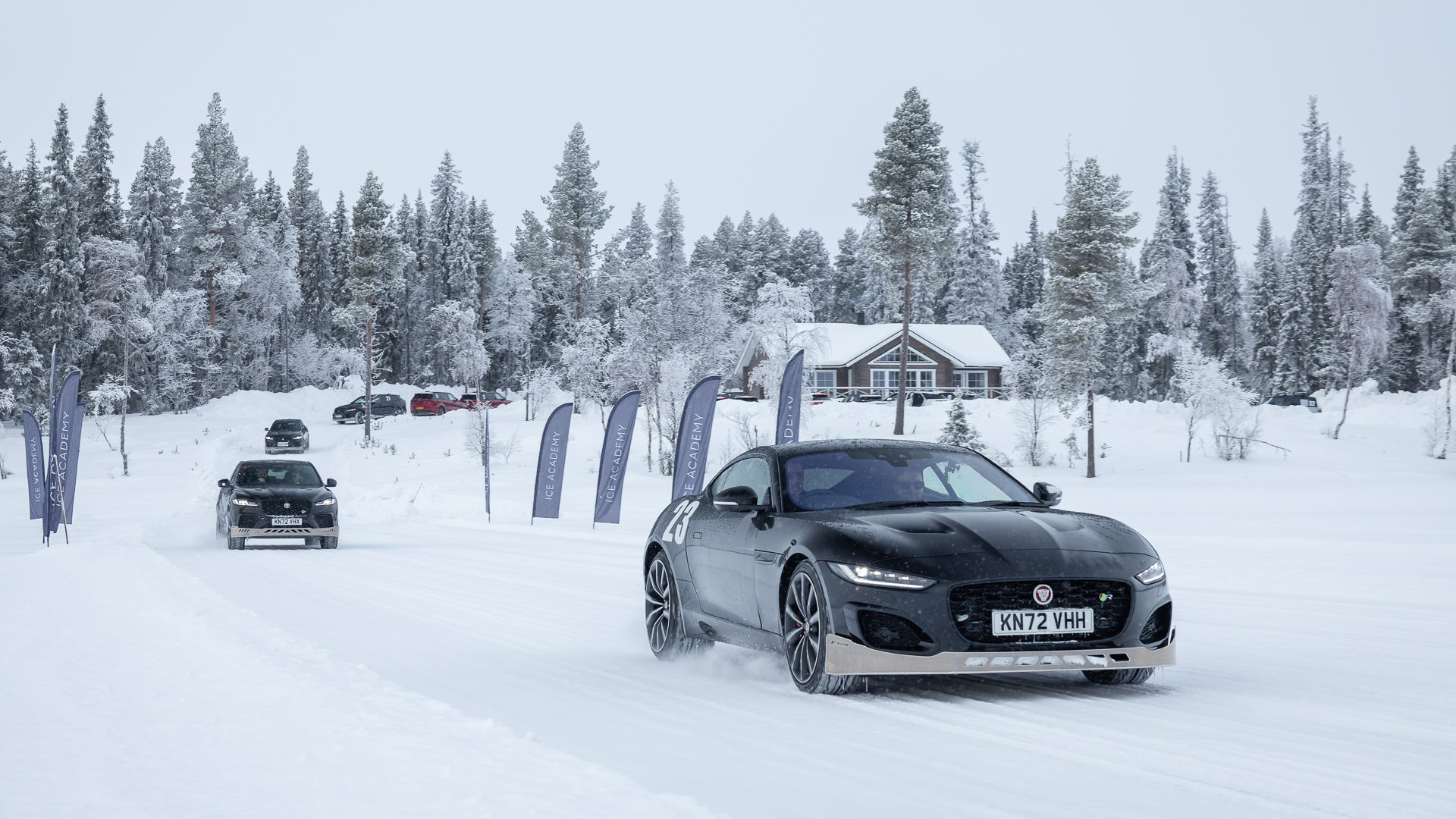

“More power, more power! Go for it!” The friendly words of encouragement crackle through a walkie-talkie and fill the otherwise silent cabin of a Jaguar F-Type SVR wearing studded tyres. I accelerate hard, firing rooster tails of snow powder at my classmates patiently waiting behind for their turn.
Remembering whatever I can from the instructor’s high-speed demonstration a few minutes earlier, I turn left, right, then left again to provoke the car into a slide. Opposite lock applied, it’s time to accelerate as hard as I dare around a massive circular track carved into the icy surface of a frozen lake. The track is a whole kilometre in circumference and my goal is to match the 130 km/h I saw during the pro driver’s demonstration.
Speed rising and V8 engine howling, the car suddenly snaps further sideways than I'd anticipated.
Eyes on stalks, breath held and mouth dry as my brain diverts resources away from basic function and toward what the primal bit between my ears thinks could be a life-saving steering input, I apply a whole turn of corrective lock and hope for the best. A video shot by my passenger shows I spent just one second teetering on the edge of embarrassment before the Jag came back to me. Yet it felt like time had slowed just enough for me to draw on everything I had learned in the hours prior to rescue the situation.
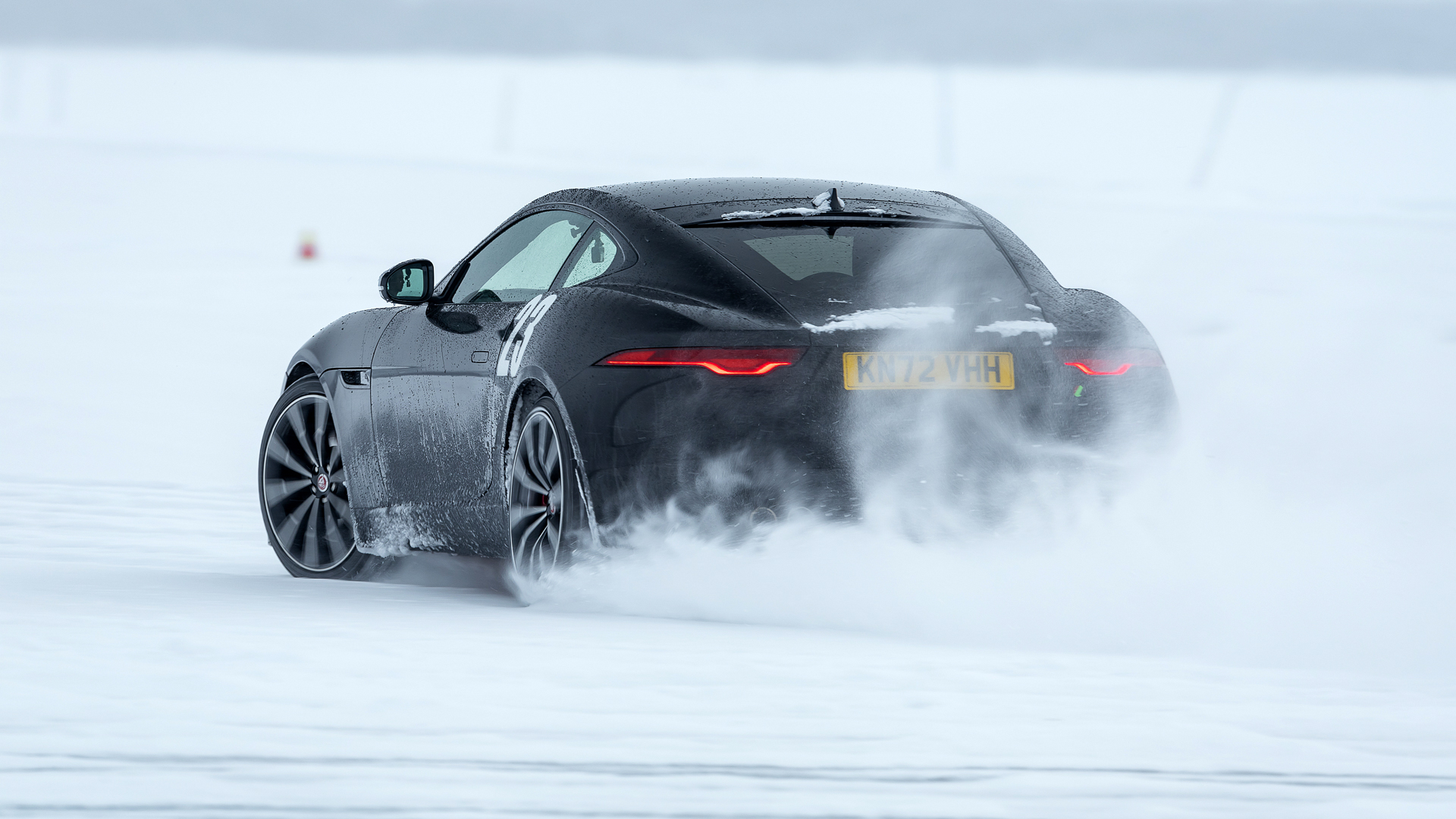
Rewind to the previous night and I’ve just arrived in Arjeplog, a locality of about 2,000 people in Swedish Lapland, 60 miles south of the Arctic Circle. It took two flights and a long taxi ride to get here from London, making the town feel as remote as it looks – especially in February, when the days are short and the average temperature ranges from about -7 to -12 degrees. The roads are deserted and fresh snow covers the empty pavements.
But Arjeplog isn’t what it seems. When winter arrives so do thousands of automotive engineers, often driving heavily camouflaged test vehicles and always wearing heavily branded clothing. They are here to test, develop and calibrate the ABS, traction control and stability systems on over 1,000 miles of test tracks carved into frozen lakes. Arjeplog is the reason your car unlocks and starts on the coldest winter mornings, then stops safely on icy roads.
Car manufacturers have come to Arjeplog, pictured below, for half a century. Everyone who tests here – from Land Rover to Lamborghini – pays to use the lakes, which span thousands of acres and are suitably frozen for three months a year. Their testing pumps about £150m into the local economy.
Sign up to the T3 newsletter for smarter living straight to your inbox
Get all the latest news, reviews, deals and buying guides on gorgeous tech, home and active products from the T3 experts
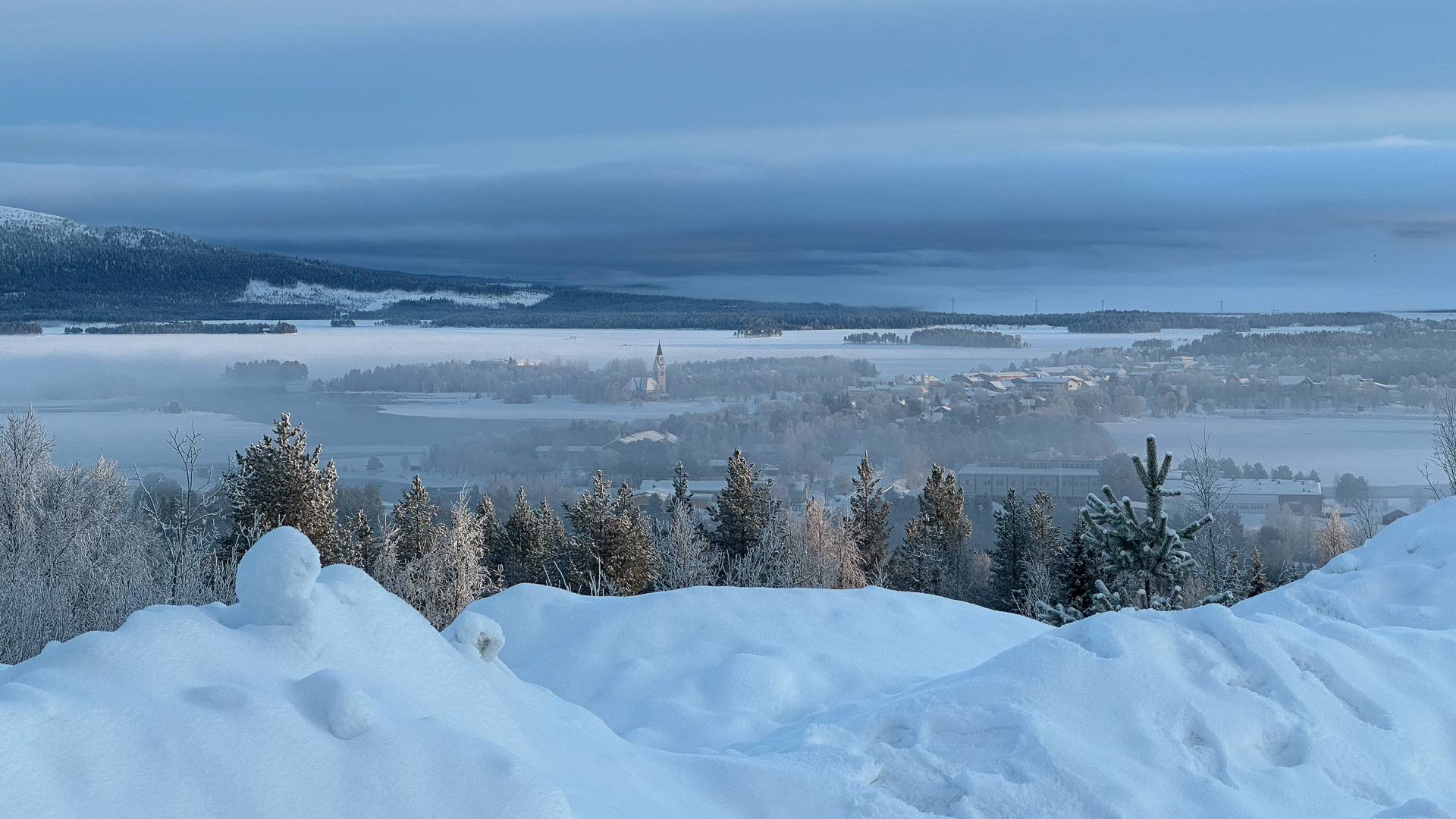
Arjeplog is also home to some of the largest driving experience centres in the world, including the Jaguar Ice Academy reviewed here. Trip packages range from one to four days and cost between about £3,700 and £6,500, with airport transfers, accommodation at nearby Hotel Silverhatten, breakfast, lunch, dinner and drinks with meals included.
My day on the ice began with a driver briefing explaining car control basics and how understanding weight transfer is key to getting the most out of the experience. Morning and afternoon sessions each last for about four hours and see guests tackle a range of ice-driving activities. In my case these included time behind the wheel of the Jaguar F-Pace SVR and F-Type SVR, each powered by hugely powerful, supercharged V8 engines, plus a hybrid F-Pace and the all-electric I-Pace.
The traction and stability controls are switched off, save for an electronic safety net that only kicks in if the F-Pace SUV thinks it is in danger of rolling, and a system to prevent the I-Pace’s electric motors from spinning backwards. Studded tyres and all-wheel-drive means there is a surprising amount of traction in every car, but still plenty of power to spin out if you’re not quick with the steering and delicate with the throttle.
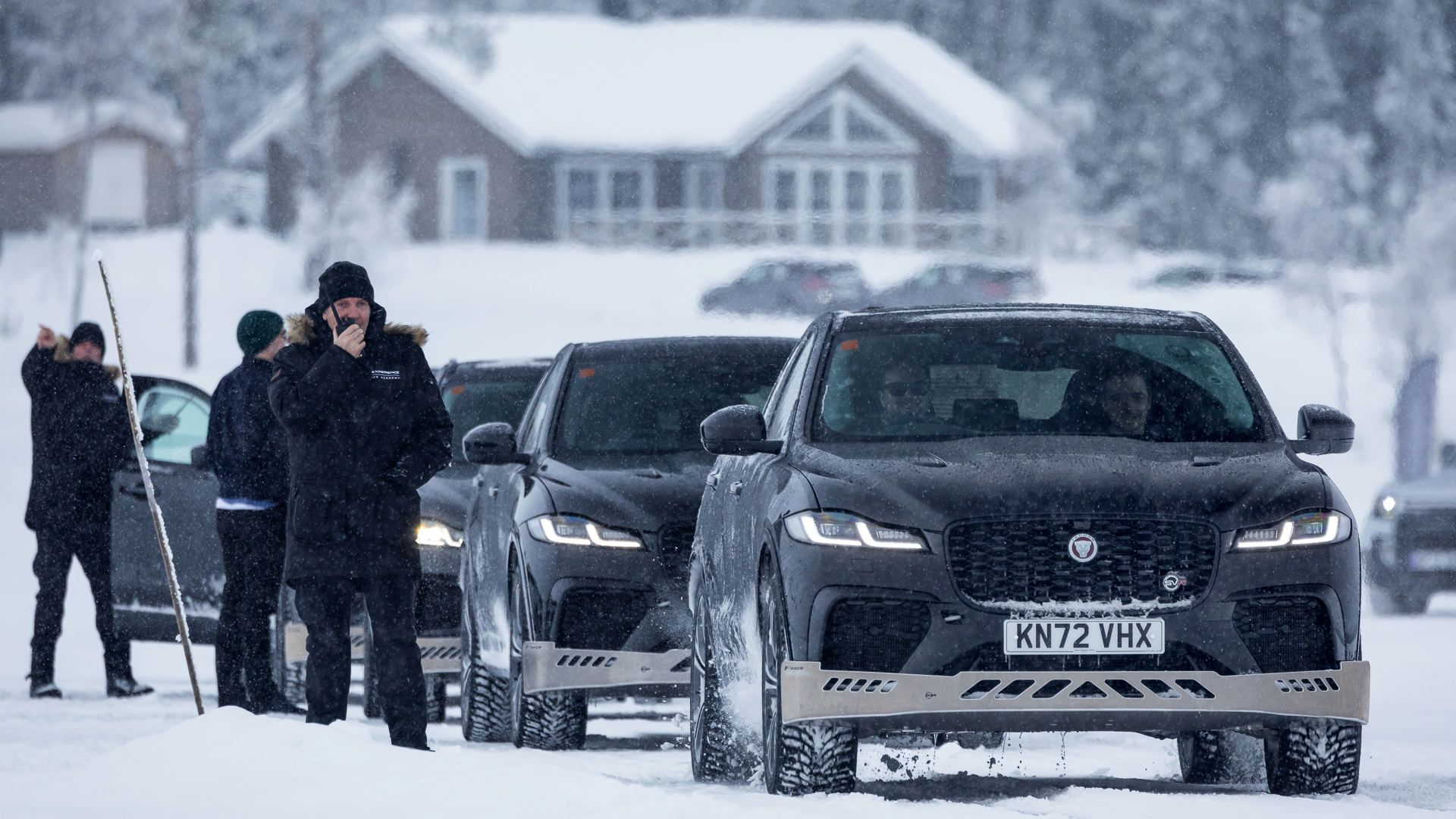
Every pair of guests is given their own car for each activity, with instructors briefly jumping in to demonstrate each challenge, before delivering instructions via walkie-talkie.
Our first challenge is a wide, simple slalom in the F-Pace hybrid, before switching to the more potent F-Pace SVR. Both cars are fantastic fun and serve as a quick introduction to the joys of sliding a powerful car on a low-grip surface, the vehicle dancing from left to right as the driver wrestles at the wheel.
I am by no means a professional driver, and have very little drifting experience. But I can confidently say that any car fan with only a basic understanding of driving dynamics will soon have the big Jag sliding between the cones. These aren’t the prettiest or most precise drifts, but thanks to the massive space on offer (plus soft-ish snow banks and front bumpers protected by metal plates), any fear of having a real accident or causing any damage will soon disappear. It’s a totally safe environment to have a huge amount of fun.
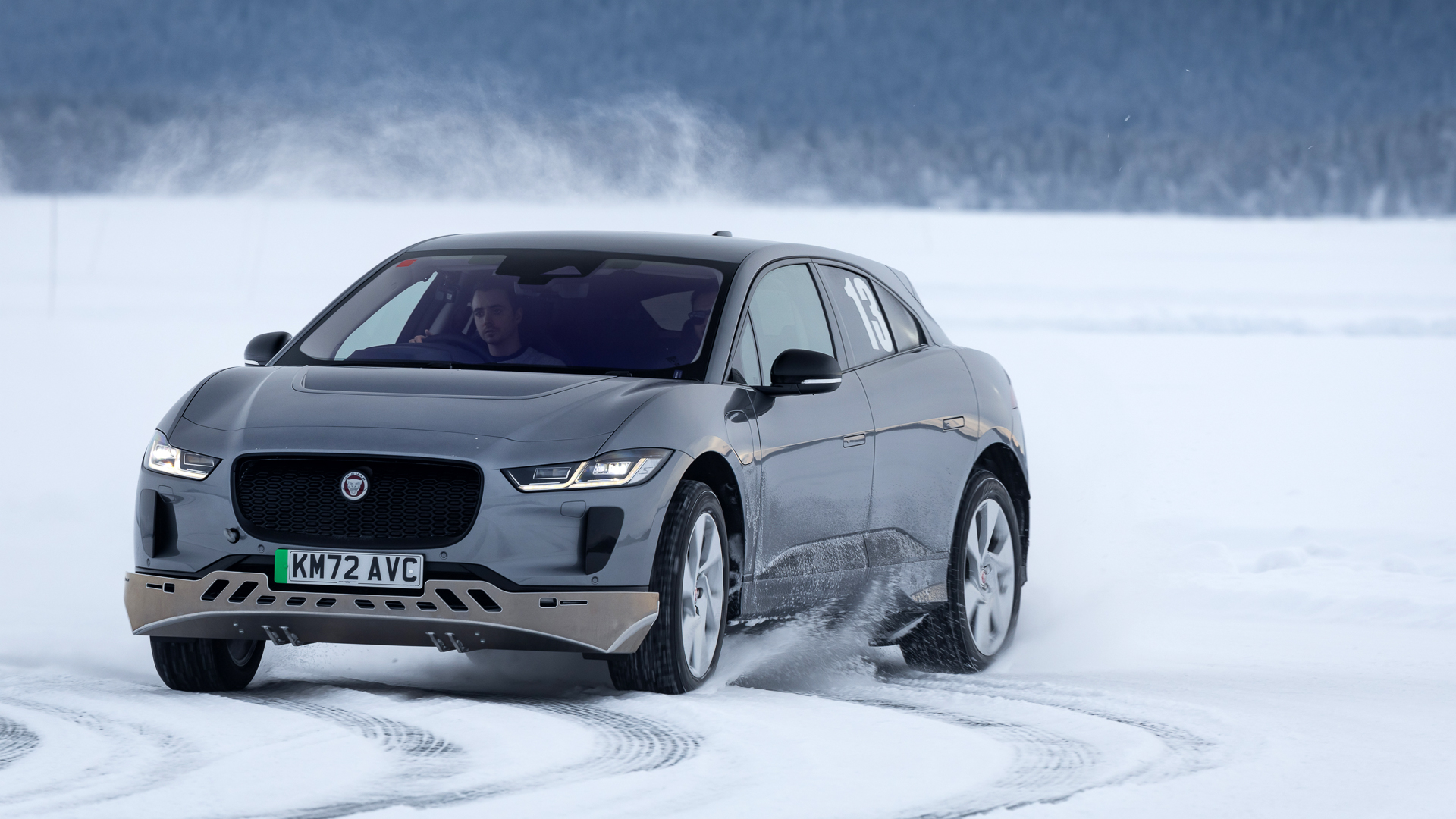
You also soon forget you’re driving a two-tonne car on a frozen lake. We’re told the ice is about 60 cm thick, and I’d learnt on a previous trip to the Arctic how 40 cm is enough to support an army tank.
After lunch at a lakeside lodge, we move on from one-at-a-time exercises to driving around an entire circuit. Following each other at a safe distance, this is an opportunity to take what we’ve learnt in the set-pieces and apply it to a seemingly never-ending series of corners. Coat abandoned, I’m working up a sweat now as I saw furiously at the wheel to keep on track. It’s not elegant, and probably looks far less impressive from the outside, but I don’t care. I’m having a blast and I’m also learning; upping the speed but crucially also ironing out erratic wheel and pedal inputs.
Competitive since we raced karts together as university students, my driving partner and I are keen to improve and realise that, while full-power/noise is hard to resist, a cleaner and more delicate approach produces the neatest, tidiest drifts. Positive feedback delivered by the walkie-talkie suggests we’re doing the right thing.
Next up is the flagship of the Jaguar range, the F-Type SVR. An all-wheel-drive V8 sports car with over 570 horsepower and four snarling tailpipes (made louder by us pressing the active exhaust button, naturally), the F-Type is approached with caution.

The immediate difference compared to the F-Pace is how much more direct the lighter, lower and stiffer F-Type is. The inherent softness and playful roll of the SUVs is replaced by a keen sharpness that demands precision from the driver. To our surprise, thuggish stabs of the accelerator are needed to get the car into a drift, but once it takes attitude the F-Type requires quick, accurate steering inputs to maintain the slide.
Too much power, and you’ll spin out. Lift off the accelerator too aggressively, and you’ll spin out. Don’t be assertive enough with the initial steering input, and you’ll understeer into the snow bank. Taming the F-Type is a high-speed balancing act that requires all the concentration – and the quickest reactions – you can muster.
Which brings me back to the high-speed drift about to go wrong in the opening paragraphs. Had this happened in the morning, there’s no doubt that moments later I would have been on the walkie-talkie asking for a tow. But such is the quality of tuition on offer here – and the patience of the instructors with their pinpoint-precise commands over the radio – I’d just about learnt enough to get away with it.
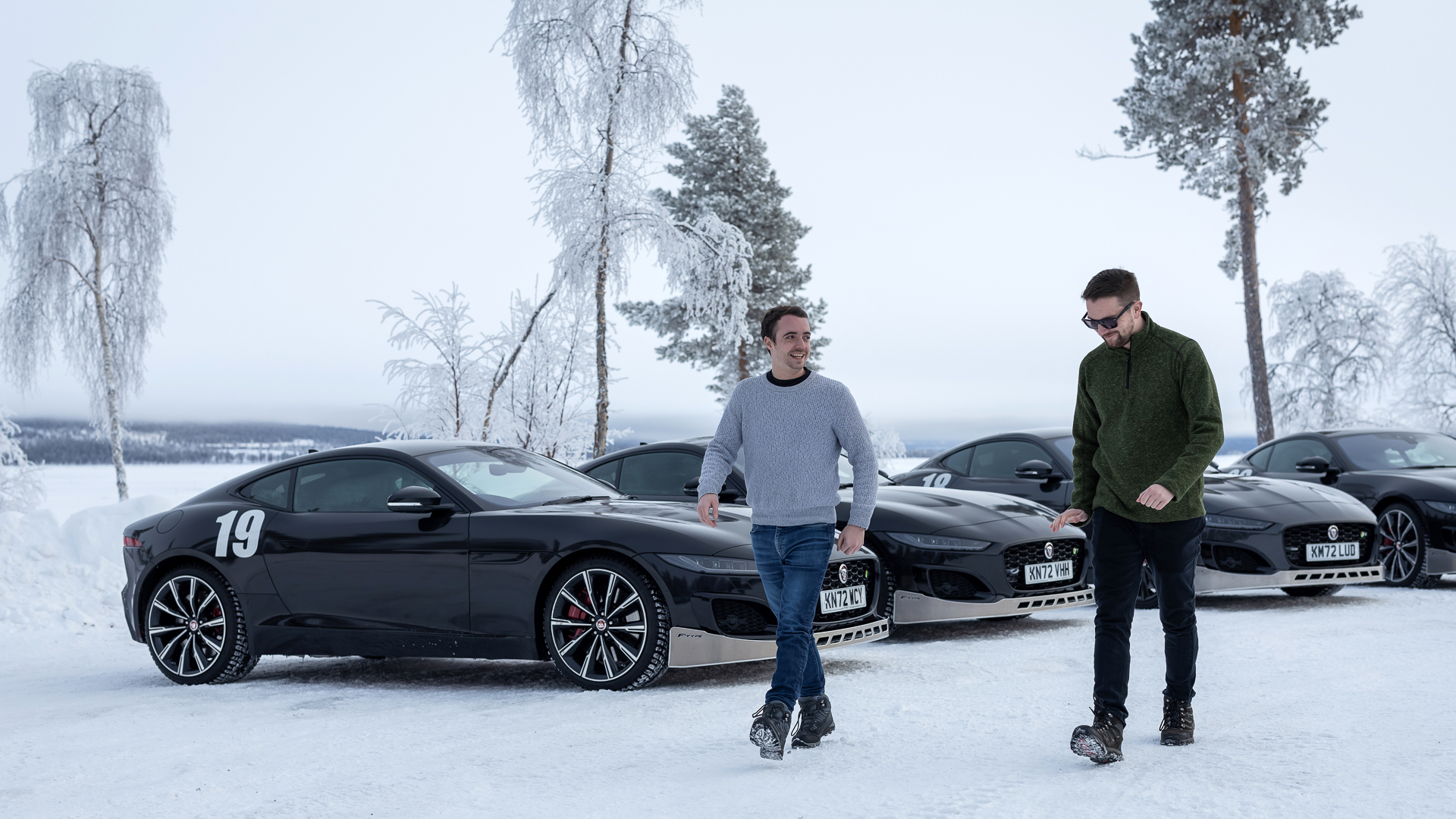
I’ll be the first to admit it wasn’t the cleanest of saves, and I’m honestly surprised I didn’t knock the wipers on, such was my flailing at the wheel. But I caught it, saw 121 km/h (75 mph) on the speedo and basked in a massive dose of adrenaline. My hands shook for a whole minute while the other drivers took their turn.
The next day, we experienced Arctic dog sledding then drove in convoy in a fleet of Range Rover Sports to the Arctic Circle. These activities, as well as a snowmobile safari, snowshoe walks and tours of Jaguar Land Rover’s winter testing facility, are available for Ice Academy guests who want to extend their trip, or for companions who choose not to take part in the ice driving. A guest appearance by the northern lights on our final evening rounded off what is surely one of the best driving experiences money can buy.
The JLR Ice Academy certainly isn't cheap. But by combining an extensive amount of ice driving and expert tuition with a once-in-a-lifetime trip to the Arctic Circle, complete with husky sledding, local cuisine – and a good chance of seeing the aurora borealis – it's an experience not to be missed.
Alistair is a freelance automotive and technology journalist. He has bylines on esteemed sites such as the BBC, Forbes, TechRadar, and of best of all, T3, where he covers topics ranging from classic cars and men's lifestyle, to smart home technology, phones, electric cars, autonomy, Swiss watches, and much more besides. He is an experienced journalist, writing news, features, interviews and product reviews. If that didn't make him busy enough, he is also the co-host of the AutoChat podcast.

